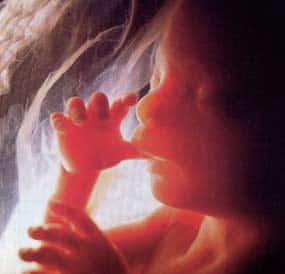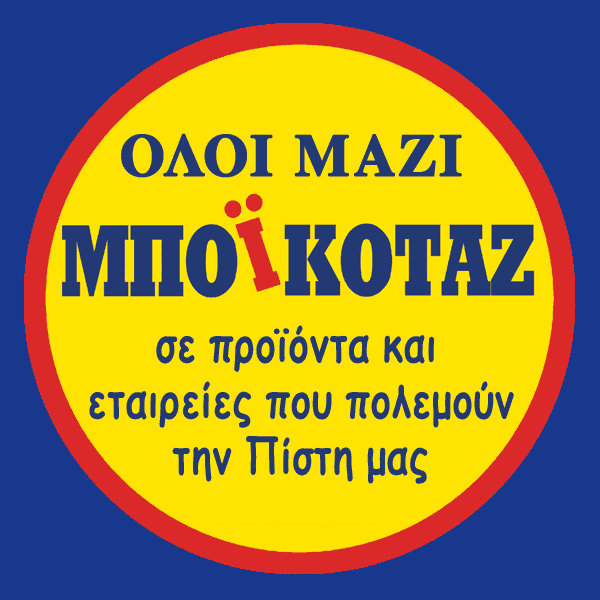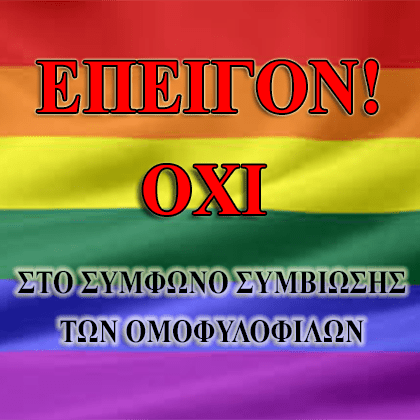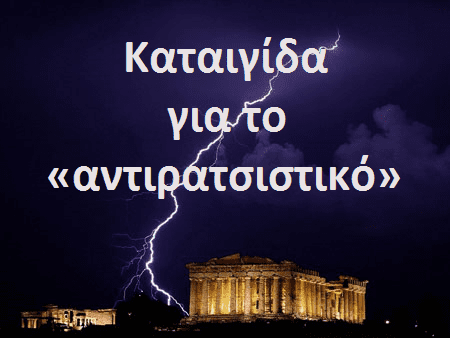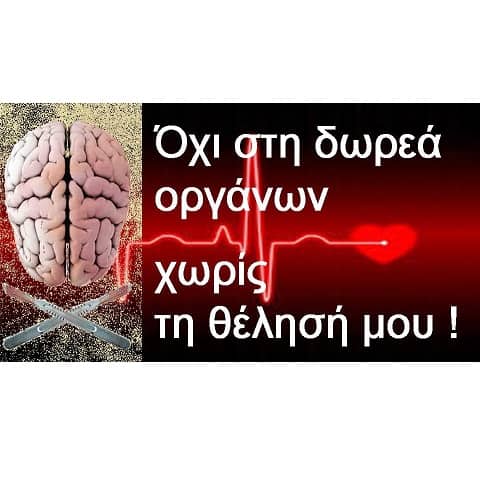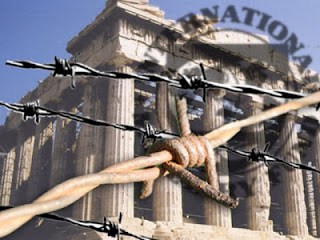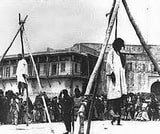by Spyridon G. Makris, Professor of Anaesthesiology – Aristotelian University of Thessaloniki
(A lecture that was delivered in the University, in April 1978)
http://www.oodegr.com/english/ag_grafi/kd/stavrwsi1.htm
We are well aware that, regardless of how much evidence and information is given to a fool, he will continue to believe whatever he wants to believe, no matter how absurd that may be. Nevertheless, there are some reasonable people amongst the atheists, who are simply misinformed or are ignorant of certain things. It is for those people, that we are re-publicizing the scientific lecture of Mr. Spyros Makris, in the hope that they too will choose to walk Christ’s Path of Salvation.
We have inserted sub-titles and certain highlights to words, in order to facilitate the reading of this lecture.
- An overview of the subject
- Was it a case of apparent death, on the Cross?
- Was it an illusion?
- Was it deception?
- Doubts about the vacant tomb
- Conversion of modern day disbelievers
- Bibliography
An overview of the subject
Dear friends,
It is truly a great privilege, to be given the opportunity for us to meet in a University amphitheater, not in that dry and confined –albeit necessary- context of conveying certain scientific knowledge, but in an atmosphere and a level of close and unlimited (with regard to the depth and the breadth of our acquaintance) communication; at a level that touches on the spiritual life of both those who are bound to relay knowledge to you, as well as of the students who come here to acquire it – to edify their spiritual world - and that is why I must give to this anonymous group of your colleagues, who had come up with the idea of this initiative, as well as to all of you who had the generosity to come here tonight, my sincerest thanks for giving me this consideration and inviting me here to speak to you.
I must tell you that whatever you hear from this moment on, is nothing more than my own personal experience; it is nothing more than those things which, during moments that are either a long way away from today or are more recent, have tortured my soul. They are things that comprise the end of a spiritual search; things that I can confirm, with the seal of an absolute, inner reassurance, with the seal that they have been confirmed through experience and through decades of observation after my return to our Lord Jesus Christ. And, it is my belief that the choice of subject, regarding the Crucifixion and the Resurrection of our Christ, is opportune, not only because we are presently in that time of the year whereby our Church has allocated –for the souls of all Christians- to turn towards and to prepare themselves for their participation in the Passions of our Christ, but also because the Crucifixion and the Resurrection are precisely the epicenter, the core of both Christianity’s affirmation as well as of the arguments opposing Christianity.
Because, if the Crucifixion and the Resurrection of Christ are true facts, then everything that we used to believe in, everything that we had become attached to, everything that we had pursued – which stood foreign and opposite to Christ and His Gospel - are all idols which we must tear down. That is why so many objections have been raised, so vehemently and so stubbornly, and why so many arguments have been presented: in the hope that they can convince people that the Resurrection of Christ did not occur.
Ιf the Resurrection of Christ did take place, then, Christ must surely be “the God”; Then, everything that Christ had uttered, everything that the Gospels had recorded, are all true, and we must –consequently- undergo death, for everything that we lived through, which was contrary and foreign to Christ, and we must re-live a new life, in accordance with everything that Christ had said, and continues to be upheld and experienced by the Church.
The arguments that are raised (in order to doubt the Resurrection of Christ) can be classified, in three major categories:
– The first category is, that the Lord DID NOT die on the Cross and consequently, since He did not die, He was not resurrected either.
– The second category of arguments against the Resurrection is the doubting of Christ’s appearances, which are clearly specified in the Gospels as having occurred, after the Resurrection.
– The third category focuses on the fact that His Tomb was found empty.
That Christ died while on the Cross is naturally an issue that is undeniably connected to the science of Medicine, because that is the science which examines nature, and the consequences of all corporal injuries; it furthermore examines all of the manifestations that are associated with the gradual collapse of vital bodily functions and, science can furthermore determine whether the conditions for the survival of an organism have been exhausted, thus resulting in death. It is therefore worthwhile for us to note that this doubting (i.e., that Christ DID NOT physically die on the Cross) had never arisen among that generation of people who had lived at the time of Christ’s Crucifixion, nor had any doubts surfaced during the era of persecutions or the era of the major heresies (which had even doubted the very Godhood of Christ, as well as His Resurrection); these doubts first appeared, only during the 17th century.
This is very characteristic, because, quite simply, it was only during that century, when both the people who had personally witnessed the Crucifixion were now eclipsed a long time ago, as were those people who were just recipients of vivid descriptions of the Crucifixion, that were verbally handed down to them through the years. If there were such eyewitnesses around today (and fortunately there aren’t any) who had witnessed the Crucifixion personally, then such doubts would never have been raised (as we shall examine, further along), with claims of a “logical balancing”.
Was it a case of apparent death, on the Cross?
Most assuredly, this question of whether Christ actually died on the Cross is linked to the way in which a person dies, when crucified. A common perception is that death on the cross is a result of the excruciating pain, along with the hemorrhaging caused by the nails that pierce the hands and the feet of the person being crucified. As we shall soon see, these are merely the secondary –albeit excruciating, as we shall explain- facets of the event itself; they do not constitute the primary cause of death.
The death on the Cross –Christ’s death on the Cross- naturally had other, “predisposing” causes. Among them, we must mention the beatings that our Lord suffered, when the barbarian soldiers of the Roman Empire “beat, slapped, thrashed and flogged” Him with all the strength that characterized them, and the brutality with which they were accustomed to perform such tortures during that era. And, although we are most certainly aware how a brutal blow to the face of an unprotected man by a coarse soldier can truly send him into a state of unconsciousness or worse, we shall nevertheless overlook this detail for now. We shall overlook it, so that we can proceed to a phrase that we probably don’t focus on as much as we should when we hear it, because it is written in a specific grammatical form in the Gospel, where it says: “having flogged Him, they delivered Him….” (Mark, 15).
So, what was this flogging instrument like? It is quite possible, that we have imagined it to be an ordinary kind of whip. Well, it was no such thing. The one who was to be flogged was tied to a post, then the special executioner who performed the flogging would take up a very heavy whip (scourge), which had a large number of straps tied to its end, each one of them with lead pellets or small bone fragments –like lamb knuckles- fastened to their ends. The executioner would then proceed to wield this whip onto the victim’s back, with all of his might... Very soon, from the very first lashes of that whip, the skin of the victim would have begun to disintegrate, and, after a few more lashes, the very flesh would be ripped off his body, revealing the bones on his back… There are several cases recorded in history, where people had died during a flogging…
And now, it was on this bloody, shredded and mutilated back, that our Lord Jesus Christ was forced to carry His Cross, which was made out of a very heavy piece of wood : one that could bear the weight of a man without buckling. We of course know –and it was to be expected- that Christ had buckled under the weight of that Cross and had fallen down, given that He was already exhausted, with a blood loss that had also drained His strength. According to traditional descriptions, He fell with His face to the ground… He fell, face down, without even being able to protect His body from the consequences of that fall, because the Cross that He was forced to carry had pinned Him down. And we also know that, in order to keep Him from dying before reaching the top of Calvary hill, they made Simon of Cyrene carry the Cross, for the remaining distance.
To all the above, let us now include the thorns that the “crown” had, which had pierced His head in numerous places. And all those who have had any experience of Hospital emergency wards, should be very familiar with the particular tendency that scalp wounds have, to bleed excessively. This bleeding, exhausted body was then nailed onto a Cross…..
Now let us examine the matter of the limbs that were nailed onto the Cross. Tradition and a common perception have given us the impression that the nails were nailed through Christ’s palms.
However, following the experiments that the French surgeon Barbet had performed on cadavers, he noticed that a nail passed through the bones of a palm can in no way support the weight of the whole human body, even if that body is supported by a nail passed through both feet. Under the sheer weight of the body, the nails in the palms would have ripped the flesh on the inside and the outside of the palm, through and through, between the fingers, and the crucified body would have fallen forward, head first, supported only by the nails that were hammered into the feet. That same surgeon proved that the only point on a human arm that is able to support the body weight with a nail pierced through it, was the wrist; After performing repeated tests, he showed that no matter where the nail pierces the wrist, it will inevitably slide along the bones and the ligaments, to a point known to doctors as the “place of Destot”, which lies between two carpal bones in the wrist. What is noteworthy here, is that after a series of 12 experiments performed by this surgeon, he made two observations:
Firstly, that in all 12 hands, no bones were bruised or broken during the piercing of the wrists – which only confirms (from yet another aspect) the words of the Bible that “no bones (of His) shall be broken”.
And secondly, he observed that in the specific area of the wrist that the nail passes through, there is a large nerve there -the Median Nerve- therefore, during all the injury that the body of the crucified will suffer while hanging from the Cross, this nerve will be in constant contact and friction with the nail, and will constantly be aggravated by it. Now, we all know what it means to suffer a simple, light irritation of a nerve. We are all familiar with the pain, when we receive a blow on a certain point of our elbow. That unbearable pain of an electric shock and the paralysis, which upsets our entire being……and that is only after a slight blow to the elbow.. Now, just imagine how it must have felt, to be submitted for so many hours to this induced pain, with its multiple intensity, while hanging from a Cross….
It was also discovered, that there is a certain point on the foot which the nail can completely penetrate, and that point is between the second and the third metatarsal bones.
But what we have mentioned so far is only a prelude, only the beginning of the torture of crucifixion, and furthermore, we have not even touched on the cause that brings about death. And this cause, which brings about death, is of great importance for our discussion, i.e., whether the crucified Christ actually died while on the Cross.
In order for us to comprehend the mechanism of death, we need to remember certain details. We have noticed that in certain depictions of the Crucifixion, the two robbers do not appear to be nailed to their crosses; instead, they appear to have their arms strapped to the cross. We have no tradition that supports this detail regarding the two robbers who were crucified along with Christ, but, the fact that they have been portrayed in this manner is more or less indicative of what many historians have mentioned, i.e., that a person can die with his arms pinned down on a cross, not by nails, but by just being tied onto it.
To prove this even more, we need only to look back to a disciplinary punishment that the German army was accustomed to implementing during World War I. This form of punishment was called Aufbinden. It involved tying the person being punished to a stake, in such a way that his feet did not touch the ground. Very soon, that person showed signs of asphyxia. His respiratory movements gradually became more and more difficult and laborious. His blood would become pressurized inside his head, his veins would become swollen, his head would present hyperemia and the person would very quickly lose consciousness; and, if they didn’t cut the rope in time, he would die.
We could also take note of another tragic method recorded in the history of the Dahau prison camp, where the Germans had apparently revived this old form of torture. We find numerous horrifying cases where people had been put to death by this method of Aufbinden. In fact, mention is also made that a small weight was even hung from the victim’s feet, whenever they wanted to shorten the duration of this torture. This detail was provided by prisoners who found themselves next to someone undergoing this torture, and who claimed that when it reached its final stages, it was extremely repulsive to watch. The victim’s face became entirely disfigured, like a hanged person’s; his thorax became distended to an unimaginable degree, his abdominal wall deeply caved in… he would become soaked in his sweat so much, that –according to eyewitnesses- a pool of sweat would form under the feet of that unfortunate prisoner. So, we have proof that crucifixion causes a man to sag heavily on account of his body weight - his body pulling heavily away from his hands, from his muscles, his arms, his shoulder zone and his thoracic wall. This sagging forces the thorax into a continuous, compulsory inhaling position, albeit that person cannot perform any voluntary exhalatory movements.
And we know that exhalation is performed passively by our thorax, without any imposed force; it is the automatic deflation of the thorax which changes shape during inhalation in order to be filled with air, thus allowing the person to renew the air in his lung cells and to oxygenate the blood in his system, so that he can stay alive. When his arms are in a pendant state on the cross, the person is subjected to an immense and immeasurable restriction in his breathing, similar to someone’s chest being confined inside a very tight suit of armor, or, like a very heavy weight being pressed down on it. He will not be able to replenish the air inside him. Thus, we see that death by crucifixion is mainly attributed to asphyxiation. Secondly, because of the immense pressure that is applied to the thorax, it is impossible for the blood that is in the head to descend to the heart. This explains the heavy congestion of blood observed in those who are crucified. If there hadn’t been another relief outlet - another means of relieving the victim’s head of this excess of blood - the victim would have died very quickly on the cross.
But the crucified victim did have a relief outlet, and that was to support his body weight by pushing his feet against the nails that held them in place. In this way, the thorax could be raised slightly, the body weight would not hang entirely from the hands and the shoulders, the thoracic walls would be relieved enough to allow him to breathe again and the blood to descend from the head, bringing the person back to a state of consciousness. But his exhaustion would not allow him to prolong this muscular feat, i.e., to permanently support his entire weight on the nail that is wedged into his feet. So, in that state of exhaustion, he would fall back into the former sagging position, which would bring about asphyxiation once again, until, after a series of such attempts, he would become totally exhausted and remain in that pendant state, finally dying of asphyxiation.
Crucifixion was indeed a satanically designed means of death, and that is why the Romans - in their barbaric desire to watch a person suffer - got so much pleasure out of watching people being crucified. And it was exactly because of the brutality of this form of death, that Roman law had stipulated it was to be used only on slaves and traitors.
Cicero, who had witnessed death on the cross, had referred to it as «Cruderissimum et deterimum Supplicium» (the crudest and most abhorrent torture) that he had ever watched. Now, if for any reason the one in charge of the execution team wished to precipitate the moment of death, what did he do? He would give the order for the shin bones of the crucified victim to be broken, and in that way, no longer being able to support his body weight on his feet to give some relief to his thorax so that he can breathe, the victim was forced to hang all of his weight –as we said- on his arms, and to die asphyxiated. That was the “coup de grace” that was reserved by experienced Roman executioners for those sentenced to be crucified. And that is why you saw the two robbers –who were still alive- being finished off with this coup de grace: the breaking of their shinbones. We are told that when they went to Christ’s Cross, they saw that He had already expired. However, we must pay special attention here: Is it really possible, for an official in charge of an execution team –who had most certainly witnessed innumerable crucifixions- to be deceived by what he saw? Is it really possible, for the crucified person to be in a state of apparent death at that moment? Everyone knows that apparent death does not include a total absence of respiration, but only a seeming absence of respiration.
If there are no respiratory movements whatsoever, it is impossible for the person to stay alive for more than 3-6 minutes, as the blood will not be oxygenated in the lungs. Is it possible, however, for even the slightest respiratory movements to occur on the cross, when, by way of breathing, the victim needs to make a tremendous effort to inhale just a few cc’s of air in and out of his lungs? Is it possible, that such a tremendous effort would have gone unobserved by anyone member of the execution team, especially when he would pay with his own life if a convict proved to be still alive, even though sentenced to death?
But even at this point, we might still find a stubborn denial in some souls, who persist in doubting. Was this the case here? Well, the Centurion himself was obviously not satisfied with the otherwise persuasive evidence of death, so, he subjected the crucified body of our Lord to the other, classical form of “coup de grace” that the Romans reserved for all those convicted to die – regardless of the means of execution - and that was the piercing of the victim’s side.
This was definitely a mortal blow, when impacted by a trained soldier with all his strength. That Roman soldier had pushed the sharp tip of his spear –which was strong enough to penetrate a body- almost at point blank; he had pushed it deep into the thorax of our Lord.
And he didn’t merely superficially stab Him with the spear tip; we are told that water and blood immediately gushed from the wound. Now, we won’t go into the profound dogmatic significance of this water and blood, during this lecture. Besides, it is not befitting for me –a doctor, a man of positive sciences- to analyze the significance. What I must point out however is that, for blood to have gushed from that stabbing, the spear must have definitely pierced either the heart, or a large blood vessel.
We must also note that if our Lord were fully alive after that spear-stabbing, then, regardless where the blood came from, it should have gushed as a constant flow, a flow with spurts, which would have been clear evidence of a living person’s pulse. But, after that single gush of blood and water, nothing else was observed; Now, what was more important here, was that such a grave wound did not inspire any further reactions; on the contrary, this absence of further reactions merely reassured the Centurion of his former certainty that Christ was already dead. Thus, there was no possibility it was apparent death on the Cross; there was no way it could have been apparent death, in the aftermath of such a heavy wound, where -we should note that- the penetration of a spearhead through the chest not only causes the severing of large circulatory organs such as the heart and the major blood vessels, it definitely causes a condition that is known to those involved in Medicine as pneumothorax, in other words, the entry of atmospheric air directly into the lungs from outside, which, as we know, is a phenomenon that does not allow any possibility of survival. An open pneumothorax would not allow for breathing, even if that person were lying horizontally on his bed. Even if there was no other factor to encumber his breathing –and we have determined that His breathing was already nonexistent- even then, such a serious puncturing of the thorax would have disabled the respiratory system’s ability to perform its function and would have brought about the death of that person in a matter of minutes.
We should highlight something else now: that after Christ’s death had been ascertained by the Centurion, His body was not taken down from the Cross immediately. Joseph of Arimathea had descended from Calvary hill where he too had witnessed the crucifixion, and had walked back to the Praetorium. He sought out Pilate, found him, and asked for his permission to take down the body of Christ.
We know that Pilate had wondered, whether Christ had finally died……..Strangely, this doubt constitutes a positive piece of evidence, inasmuch as the Centurion (who was now obviously reassured of his conviction that Christ had expired on the Cross) was the one who literally authenticated Christ’s death, not only by leaving Christ hanging on the Cross, but also by officially reporting Christ’s death to Pilate.
After this reassurance, we then have a third time lapse: the first one, was the time taken for Joseph to go to Pilate; the second one, was the time taken by Pilate’s messenger to find the Centurion, and the Centurion to go to Pilate to confirm the death, then the third time lapse, when Joseph of Arimathea walked back up to the crucifixion site, bringing with him the clean shroud. It was after this overall time lapse, that Jesus’ body was taken down from the Cross – which was plenty of time for all the mechanisms of death to set in, and, even if these mechanisms –for some logically impossible and absolutely unacceptable reason- had not brought about His immediate death, they would have definitely brought it on, after all the time that had passed.
And now, we move on to the burial procedure, which, according to the Gospel, was performed by Joseph and Nicodemus and the others who were present, in accordance with the Jewish custom.
In the Talmud, we can find the complete burial procedure set out. Obviously to exclude the possibility of apparent death, this procedure included the placing of a feather in front of the nostrils of the deceased for a period of about 15 minutes, to ensure that the feather was not disturbed by any breathing.
Having prepared Him accordingly, they wrapped Him in the shroud or the material, and then they wrapped His entire body, as was the custom of the Jews. On top of all those layers of cloth, they poured 32 kilos (100 litres) of a mixture of myrrh and aloe, two aromatic essences which, when mixed together, formed a thick, glutinous substance that permeated the corpse in a thoroughly airtight manner (even more so, when a full 32 kilos is used), on all areas of the body that were covered by the cloths. So, if we were to assume that an entirely healthy person was thus wrapped in a sheet, including the face cloths, and the sheet was then soaked with this glutinous, impermeable substance, and poured over him thus abundantly, then that person would undoubtedly die of asphyxiation.
Thus, even if we disregard all the other, numerous causes –each one of which was enough to bring about death- we now have an added cause of death here, inside the tomb; a death by asphyxiation, brought about by the mixture of myrrh and aloe.
In the 18th century, the first one to present arguments in favor of apparent death was Venturino. The rationalists of that time had accepted the idea that -thanks their intense aroma- myrrh and aloe could revive a person who was severely bruised, bleeding, dehydrated, motionless, fainted or comatose (if he wasn’t already dead); this is something entirely unthinkable. If myrrh and aloe were truly so effective, then we doctors, instead of resorting to a wide variety of methods, procedures and examinations to save the heavily wounded, should only have to give the patient a whiff of myrrh and aloe, and that would immediately revive him. The mixture of myrrh and aloe was definitely an added reason –an added cause- of death; a final argument, for all those who doubt.
But, let’s continue this train of doubt -in a stubborn and diabolical way- even further, and let’s assume that it was indeed a case of apparent death; let’s assume that Christ hadn’t actually died, and that His resurrection didn’t take place, but that He got up on the third day and started to walk…..I beseech you therefore to tell me please, how did He manage to rid Himself of the tight embrace of the cloths, of the shroud, and of the other covering materials that He was wrapped in? How did He manage to push away the heavy boulder that Joseph of Arimathea had sealed the tomb with? It was the same boulder, that the three women who visited the tomb on Sunday morning, were asking themselves who was going to roll it away…. Finally, if we were to assume that such a thoroughly wounded, exhausted body did –nevertheless- get up; if we assumed that it did push away that boulder, it would have undoubtedly relapsed into a wretched state after only a few steps, and would not have been able to stand on its feet at all, except after an extensive therapy of many months - even if the means we have today for intense therapy for those who are very near death were made available to that person.
Were Christ’s appearances indeed like that? We need to stress here, that it was not merely a piece of information, that Christ was seen in perfect health by all those that He appeared before; it is a crucial prerequisite, in order for the Gospel to exist at all. Because, it was precisely the vibrant health that Christ’s body radiated, that convinced those disbelievers of His bodily resurrection.
So, instead of a body that dragged itself along, fainting - a picture that would have truly evoked pity and disgust because of the tortures it had suffered - we have appearances of a man full of vigor, who radiated grandeur, peace, ease, with a body that moved so swiftly, that it managed to catch up to two people who were walking several kilometers away from Jerusalem and who had departed ahead of Him and to walk along with them for another long distance, until the dusk. We therefore truly have appearances of a person who was perfectly healthy and strong.
That Christ did, in fact, die on the Cross; that it is impossible, not to admit that His appearances were appearances of a person who had been resurrected after the martyrdom of a crucifixion, have both been positively confirmed, by Medical Science.
Was it an illusion?
Now we shall take a look at the second category of doubts, i.e., if those appearances were real, and if the description and the testimony found in the Holy Bible regarding these appearances are credible. In this instance, we shall require –and shall enter- the realm of another science: the science of law, which is a science that examines with extreme precision, with immense logical caution, the credibility of all indications. Because, in order to ascribe responsibilities, recite accusations and pronounce sentences, it constantly relies on indications and testimonies. That is why, with its very thorough sifting and its absolutely logical austerity, it has been able to determine which testimonies are credible and which aren’t, and also, when a testimony and an indication should be doubted.
Now we need to point out that, if the testimonies pertaining to Christ’s appearances –as recorded in the Gospels and in Paul’s first Epistle to Corinthians- if these testimonies do not represent reality, it means it has been the result of two deviations from the truth: Either it was a false impression or illusion, or else it was a case of intentional deception.
Let’s take a look at these two doubts, one at a time. Let’s first take the possibility of an illusion. False impressions will force us to resort to Medicine again. Because illusions are a phenomenon that Medicine has been studying for many years and in thousands of cases, where illusions appear in man, in certain ways.
We should mention some of these ways:
First of all, people who have visions and illusions comprise a certain category of people who are usually predisposed towards them. Illusions are an extension of their personal dispositions and they relate to events whose realization is desired very intensely by those persons.
Firstly, there must be a predisposition. Secondly, these people belong to a certain type of person who is prone to such phenomena. Furthermore, if a number of people have illusions, then those illusions will have a different content and character, which has to do with the psychic world, the personality, and the experiences that characterize each person. The illusions will therefore have a different form and a different content between them. These illusions also usually appear at a specific time and place, that is, under the conditions that will predispose a person for those illusions. Finally, if those illusions tend to repeat themselves, then their repetition is usually observed over a long period of time.
So, let’s see now, do Christ’s appearances follow even one of these basic rules, which characterize people with pathological illusions? First of all, were those people -whom Christ appeared before- really predisposed to seeing Christ resurrected? It is highly unlikely. Not only were they downtrodden, not only were they certain that the whole story was over, but even when they received messages from reliable people, who lived among them and who confirmed having seen Christ resurrected, they refused to believe that those appearances were real; that Christ was truly risen. So that, not only were these people not predisposed to illusions, they were even negatively predisposed towards believing that it was ever possible to see Christ again.
Now we have said, that the persons who suffer illusions belong to a specific type, and in fact a type that is prone to such phenomena. Let’s see, do any of those witnesses belong to any such specific type?
We are familiar with those people, from their writings and their narrations. For starters, they were people who did not fantasize.
Let’s take the tax-collector Matthew. This was a man who spent all of his life poring over accounts. This was Matthew, whose Gospel is full of realism, with nothing poetic about it, nothing lyrical, just a careful deposition of events, with exceptionally real details, exceptionally realistic ones.
Let’s take Thomas. Thomas definitely doesn’t belong to that category of people who see illusions. He was the man who, when told by the 10 disciples –whom he had spent 3 years of incessant living with and who unanimously reassured him that they had seen Christ- stubbornly refused to believe them, and who stated: “I will not believe; not even if I see Him; not unless I touch Christ, and in fact, touch that very part of His body, which testifies to His death.” Was this the kind of person who is prone to illusions?
And Paul? Paul the persecutor? Paul, who had literally ravaged the Church and every person who wanted to proclaim that Christ was risen. Was he really a suitable type of person, who would see and listen to the risen Christ, just when he was at the peak of his fury against the very idea that Christ had risen?
So, we have seen that the people to whom these appearances occurred, were people with different characters, of different types; in fact, they were types entirely alien to the possibility of illusions. We furthermore know that Christ appeared to 500 people simultaneously. And the majority of those people had believed that they saw Him. Is it possible, for all 500 people to belong to the type of person who sees illusions?
Now, we have also mentioned that if a large number of people have illusions, then those illusions will have a character analogous to each one’s personality. And we know full well, as it is only logical to expect, that the persons of Christ’s environment had far different characters. Anyone with an elementary kind of psychological observation can perceive the huge differences, the basic, fundamental differences in character between the Apostle Peter, the Apostle Paul and John the Evangelist. The assorted characters in the Gospel – Christ’s disciples – comprise a spectrum that we can safely say represents almost every type of human personality. Nevertheless, they all conceded and admitted that Christ had the exact same appearance and speech as before, when He spoke to them; He had the exact same personality. They all agreed absolutely, on what they saw and what they heard. And that alone contravenes the idea that Christ’s appearances were illusions.
We also said that illusions appear in suitably suggestive places and times and hours of the day. Here we see that there are no such coincidences. As He usually did in the past, Christ again appeared in the light of day. He appeared for lengthy periods of time, in the middle of the day, in the afternoon, and He had even walked through the fields for hours; He appeared in the garden of Jerusalem’s graveyard. He appeared on the Mount of Olives, and on a low hill, before scores of people. He also appeared in a room, where the disciples were sequestered. He appeared near the lake Tiberias, where, as you remember, the second miraculous catch of fish occurred. As you can see, all these appearances had nothing in common with each other, nor were they at all suggestive, in order to create an atmosphere and environment suitable for illusions. We also said that when illusions appear repeatedly, then they normally repeat themselves over a long period of time, and, either they tend to become more sparse or they abate in intensity –in which case, they will eventually vanish altogether – otherwise, they will tend to intensify and increase progressively – in which case, they would eventually end up as a crisis. We see nothing of this kind here.
Christ’s appearances occurred with the same frequency, and 40 days later, they were abruptly interrupted, without once thinning out, and without peaking even once; they were however interrupted, after Christ’s Ascension. Let’s also make a note that, when speaking of illusions, we all basically mean apparitions; in other words, appearances that are perceived by the faculty of sight. But here, nothing of the sort had occurred. Not only were most of those appearances accompanied by acoustic impressions and dialogues between the one who appeared and those whom He appeared before; they were also confirmed by the faculty of touch.
We have the certainty that the Apostle Thomas acquired, after touching the risen Christ’s body, and furthermore, so that there would be no doubt left in the disciples’ minds that Christ’s appearance was real and not imaginary, when He saw how they doubted –in their agitation and fear- what they were seeing before their very eyes, He actually consumed some food in their presence – some fish and a piece of honeycomb. In this way, after His departure, they would all have had the assurance that He had truly appeared before them with a real body; firstly, from the fact that the fish and the honey which they all happened to be eating and was already on their table, and secondly, from the fact that both those foods leave “residues”. (The honeycomb’s residue was the beeswax, and the fish had bones). We also know that Christ Himself cooked meals; he Himself roasted the fish near the lake – His own fish, as well as the fish that the others had caught, and had all shared during their meal. So, we have tangible leftovers too, from all these appearances, which refute -and totally crush- all those arguments that favor illusions.
How is it possible for the disciples to resort to illusions when witnessing Christ to us, when there was material evidence from those appearances of Christ’s resurrected body?
Was it deception?
Now, if the appearances we just described were not the product of illusions, then could they be the result of deception? Because this recourse can be contested; this recourse can remain under doubt. It must therefore have been the result of deception, some will insist.
The first reason these appearances cannot be perceived as a result of deception is because the people who testified seeing Christ after His Resurrection were many in number and throughout many years. In Paul’s 1st Epistle to Corinthians, these crowds are numbered; the Apostle mentions in there (and Mark also mentions it in his Gospel) that more than 500 people had witnessed Christ’s appearance. So, it was witnessed by many. It is therefore highly improbable that so many people, over so many years, could have made such a crude and blasphemous claim, and that not even one person was found, who went back to testify and to remonstrate that they were personally involved in this deception, or had even fallen a victim to it. Thus, for any court of law, for any judge who abides by the rules pertaining to evidence, the fact alone that so many people witnessed Christ’s appearances, excludes any possibility of deception.
The second reason why the possibility of deception should be excluded is that the information and the message that Christ’s appearance and His Resurrection carried (and continue to carry) were accompanied by proclamations of a most sublime teaching on virtue that mankind had ever heard. Virtue, that was not limited to the enactment of certain virtuous acts, but one that even touched -in an absolutely austere form- the thoughts, the emotions and the dispositions of every person. So, how could it be, that people not only willingly continued to preach this message, but also, that people –as witnessed even by their sworn enemies- remained faithful to such a strict teaching all their lives? Did they support and propagate their preaching, based on a clumsy lie?
Even the suspicion that it might have been a deception, is waived by the behavior of the apostles, just three days after their teacher’s crucifixion, as we mentioned above. These people were terrified; they were totally dismayed. They were actually convinced of His death, as we can judge from the account of the discussion between the two disciples on their way to Emmaus, when they talked about the crucifixion and also about (what they considered to be rumors of) the resurrection. They were convinced that this affair of Christ had ended without glory, when He was crucified. They had sequestered themselves, as we already mentioned, because they were absolutely sure that it was impossible for anyone to have seen Him alive, and they were not ashamed to admit this. Later, they openly displayed their about-face, only after they were personally convinced that their meeting with Him was a true presence and not imaginary.
If these people had wanted to propagate a deception, wouldn’t they have at least avoided revealing all the misgivings they had? Wouldn’t they have avoided proclaiming to all the world -and writing in every Gospel- that they themselves had doubted, that they themselves had refused to believe and had raised respective arguments? Weren’t they the ones who had said that the rumors of the resurrected Christ’s appearances were only a prattling, an obsession, a lie? And now, wasn’t it these same, terrified, dismayed people who not only proclaimed their faith -in the face of the world’s potentates and armed soldiers who were eager to exterminate them- but were also willing to unflinchingly sacrifice their very lives, even after persecutions and tortures? Would they have done this, for the sake of a deception?
As the Frenchman Goguel had quite correctly said, “it is impossible for a person to subject himself to persecutions and to surrender his life to tortures and tyrannical treatment, for the sake of a lie”.
Man resorts to lies, in order to avoid persecution, and not to succumb to it.
Thus, we see that the overall teaching of the Church is based on the certainty of the Resurrection. And we should also add –perhaps firstly add- that this certainty of the Resurrection was provided by Christ Himself. He had stated it clearly, He had proclaimed it, and He had supported it.
And how is it possible to consider Christ a fraud, when He was not merely the one who preached, but also practiced what He preached; He was the one who indisputably underwent crucifixion for what He preached. How is it possible to look upon this man as a fraud who had staged His own burial and His own Resurrection?
Now that we have analyzed the undeniable credibility of Christ’s appearances –which was the second category of doubts- we shall examine the third category which is far easier to refute, and that category pertains to the vacancy of the tomb.
Doubts about the vacant tomb
The first doubt expressed about the vacant tomb appears in the Gospel itself, when the garrison went to report to the high priests everything that had occurred, i.e., the earthquake, and the glorious Resurrection of our Lord. And how did the high priests respond? We read that they offered significant sums of money, to spread the rumor that “while the garrison was asleep, His disciples came and stole the body”. This naïve explanation is very easily overthrown, by the simple question “if the garrison was asleep, how could they report exactly what happened?” (i.e., that the body was removed by the disciples). “Otherwise, if they weren’t asleep, why did the guards allow the disciples to take the Lord’s body from the tomb?”
Now, the other scenario is that the body was not removed by the disciples, but that the high priests themselves had removed it, so that the tomb wouldn’t become a place of worship for Christ’s followers. But even this is entirely unthinkable and contradicts logic. We know that just a few days later, and in the presence of thousands of people, the high priests were accused to their face by Peter that they “killed the leader of life, whom God raised from the dead”. With this action, Peter inspired thousands of onlookers on that day to become believers, and later apostles.
Wouldn’t it have been better for the high priests to have curbed the Christian teaching at the very beginning, by simply presenting Christ’s corpse – which they had supposedly abducted? It would have definitely curbed the new movement, which was incessantly draining the Sanhedrin of its Scribes and Pharisees. They could have easily stopped this “blasphemous heresy”, by simply displaying Christ’s dead body and thus easily proving (which was within their powers to do) that He was nothing but a deception.
The Judge of the High Court of England, Lord Darling, summarizes his legal opinion on the Resurrection of Christ with the following words, which are so authentic, that I don’t have to add anything else:
“As Christians, we are called upon to confess many things, only through faith. But on the basic issue, i.e., if Jesus Christ rose from the dead or not, which is based on whether Christ was truly that which He preached, we are not called upon to confess this through faith. There are so many positive and negative indications that are presented by facts and circumstances that support this conviction, that no body of intelligent jurors in the entire world could reach any other decision, but that the Resurrection was actually true. But in order to prove the truth of the Resurrection, most people present that one argument –that positive argument- which I believe is the most convincing argument for us who live in an age of denial, apostasy and confusion: It is precisely those unexpected, and psychologically and rationally inexplicable conversions of people from denial and stubborn disbelief in faith, thanks to the Resurrection of Christ”.
Conversions of modern day disbelievers
There are very many, millions of such cases, but we shall only mention those involving famous people of intellect, who were once disbelievers and later converted to the faith.
In England, there was a Philosophy Professor, Mr Joad, one of the better known professors, who was so fanatically in denial, that he never missed an opportunity –either through his written word but also through a series of weekly broadcasts on an English radio station, titled “Joad and God”, where he defended the inaccuracy of the Gospel. Joad did this, by studying the Holy Bible persistently and preparing his arguments accordingly. But he himself suddenly appeared during his later years and claimed that “everything I believed in was a lie”, struggling like Thomas and preaching to all the world that Christ really is the Lord God.
In the 18th century –as I mentioned earlier- denial had reached its peak. And in England -as Montesquieu had said- if even one person declared in any circle of educated people that he was a believer, he would not be received with anything else but laughter and jeering.
During that era, two educated young men form Oxford University had made it their life’s work to write two treatises, in order that the one man would prove Paul’s conversion was not attributable to faith –to genuine faith- and the other man would prove that the Resurrection of Christ was a lie. The first – Lord Lyttleton – after a certain period of time returned with a text that proved Paul’s meeting with the resurrected Christ had indeed taken place on the road to Damascus. The other man, Gilbert West, wrote an entire treatise which he named “Observations on the History and the Evidence of Christ’s Resurrection”, which was filled with innumerable arguments –many more than I have presented to you today- all of them extremely logical arguments regarding the truth of the Resurrection.
You may have heard that the most famous satirical magazine in the world is “PUNCH”. For years, its editor was a certain Muggeridge, a very sharp witted and derisive spirit, who didn’t hesitate to proclaim his faithlessness. But with one visit to the Holy Land, Muggeridge found himself in a situation that was entirely the opposite to what he had expected. Instead of producing evidence that the conviction regarding the death and the Resurrection of Jesus Christ is a myth, he returned home with the unshakeable conviction of the veracity of the Christian faith and with such a spiritual conversion, that today he is one of the main leaders of the Christian movement called “Festival of Light” in Great Britain. In the multitudinous congregation in Trafalgar Square in London, Muggeridge was the one who cauterized the vulgarity and the decadence that faithlessness leads us into, urging the audience towards an awakening.
Perhaps, to those who want to strain their mind, this might be the necessary thing to do; perhaps the most characteristic monument of logic is the work of the legalist Morrison. From a very early age, he had read a Criticism on the Holy Bible by the Critics of the German School. He had even “armed” himself with arguments opposing the Christian Religion and had commenced to write a book based on those arguments; a book which would logically have convinced everyone that the Resurrection had not taken place. While writing this book, he found it was impossible to keep writing it. And not only impossible to keep writing it; he realized his thoughts and his words that were being recorded, were leading him into entirely the opposite direction of his target.
He stated that: “The power of those circumstances was forcing me to write something entirely the opposite; not because the events that I had studied had changed (because they are permanently recorded in the pages of humanity’s history), but because the interpretation of those events had undergone a change inside me, on account of the persistence of those very events themselves.”
The author discovered one day that not only couldn’t he continue writing the book he had planned, but that even if he wanted to, he couldn’t. And it was from this effort, that the well-known book by Morrison “Who moved the stone?” came to be. This book has circulated in millions of copies and truly comprises a monument to logical exercise, where he has taken all possible paths of doubt and cuts them off by using the very testimonies of the Holy Bible, and, based on logic, he proceeds with his task of analyzing these doubts and then indicating where they all fail.
In the presence of all the aforementioned intellectuals, it would be extremely bold for me to say a few words about myself. I am saying this with an absolute conviction about the difference in stature and status that discerns these people from my person. But I owe it to you to do it, and I am doing it, for the first time; because I owe it to you who are my brethren, with whom I have been living my University life so intensely, for practically all the years of my life, as a student, steeped in denial and doubt. And I need to tell you that I accepted –after very extensive studying- the message of the Resurrection as something real; that my whole life, from one aspect, has been nothing more than a heated focusing on the accuracy of the teaching regarding the Resurrection. And I must reveal to you that, not one single moment, not one single observation in my life, has done anything but confirm the truth of the Gospel’s teaching – the truth of Christ’s Resurrection.
And I would like to invite each one of you, as brother to brethren, if this realization has not yet fully impacted your lives, to embrace this stance and to unreservedly, honestly, and without fear accept the Resurrection of Christ as a real event. And you may also come and find me, to discuss if necessary, and to rejoice together with everything that will ensue from this opening of the soul to the Resurrection of Christ.
I thank you all, very much.
BIBLIOGRAPHY
1. P. Trembelas: Jesus of Nazareth, Athens, 1955.
2. E. Theodorou: The eternal truth, Athens, 1960.
3. J. Agapides: Jesus standing before Judean and Roman justice, Thessaloniki, 1969.
4. R. GUARDINI: The Lord, Greek translation, Athens, 1956, Vol.III.
5. P. BARBET: LA PASSION DE JESUS CHRIST SELON DE CHIRURGIEN, RILLEN ET CIE, ISSOUDUN, 1950.
6. P. BARBET: A DOCTOR AT CALVARY, P.J. KENNEDY, NEW YORK, 1953.
7. PR. J.N.D. ANDERSON: CHRISTIANITY THE WITNESS OF HISTORY, TYNDOLE PRESS, LONDON, 1969.
8. PR. J.N.D. ANDERSON: EVIDENCE FOR THE RESURRECTION, INTERVARSITY PRESS, LONDON, 1968.
9. F. MORRISON: WHO MOVED THE STONE? BARNES AND NOBLE, NEW YORK, 1962.
10. J.YOUNG: THE CASE AGAINST CHRIST, FALCON BOOKS, LONDON, 1962.
11. K.N. TAYLOR: IS CHRISTIANITY CREDIBLE? INTERVARSITY PRESS, 1970.
Translation by A. N.


